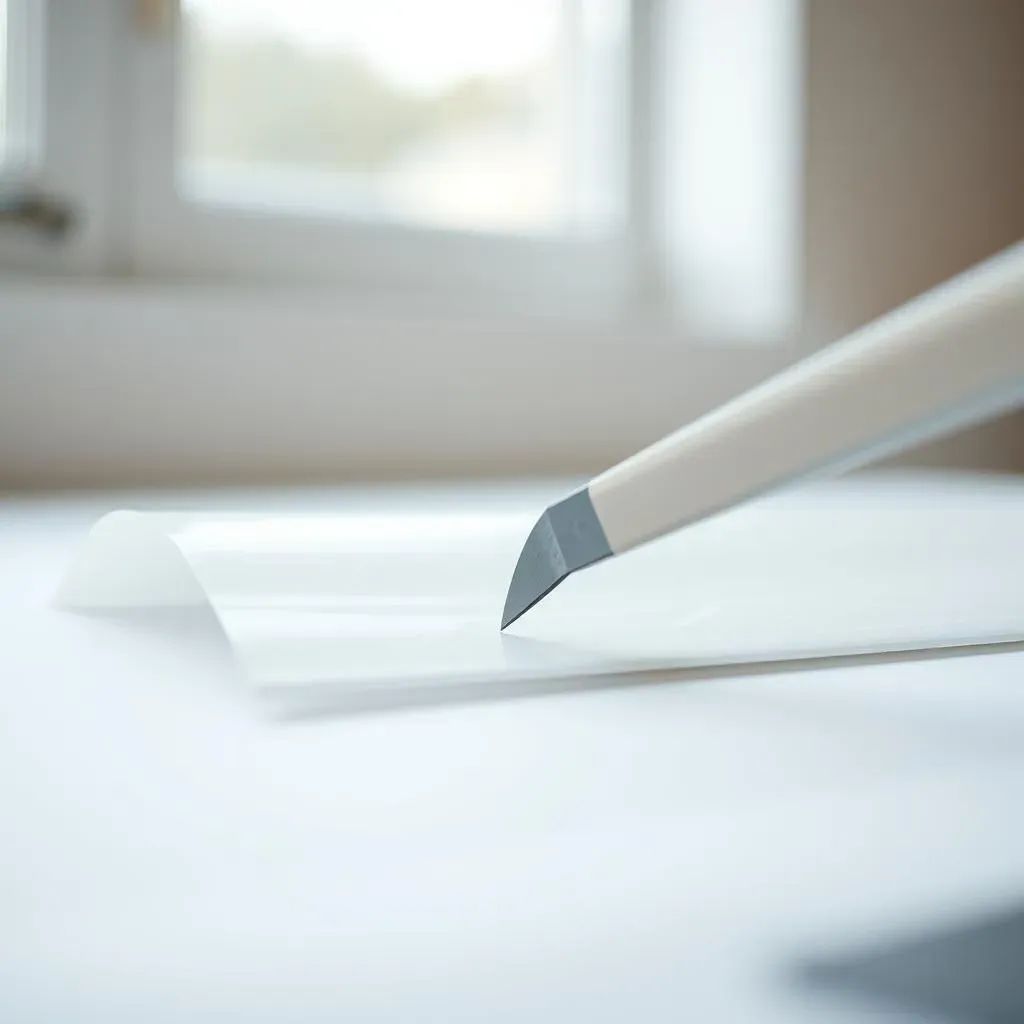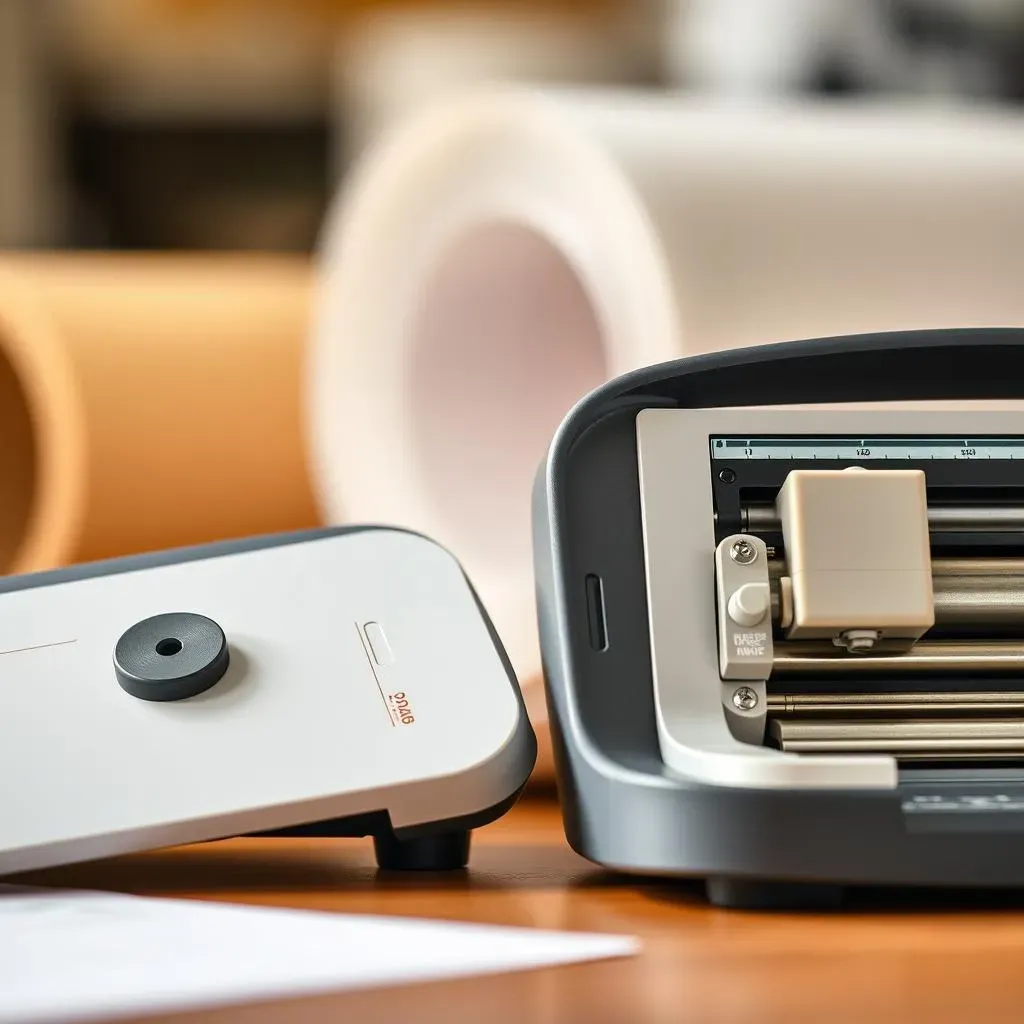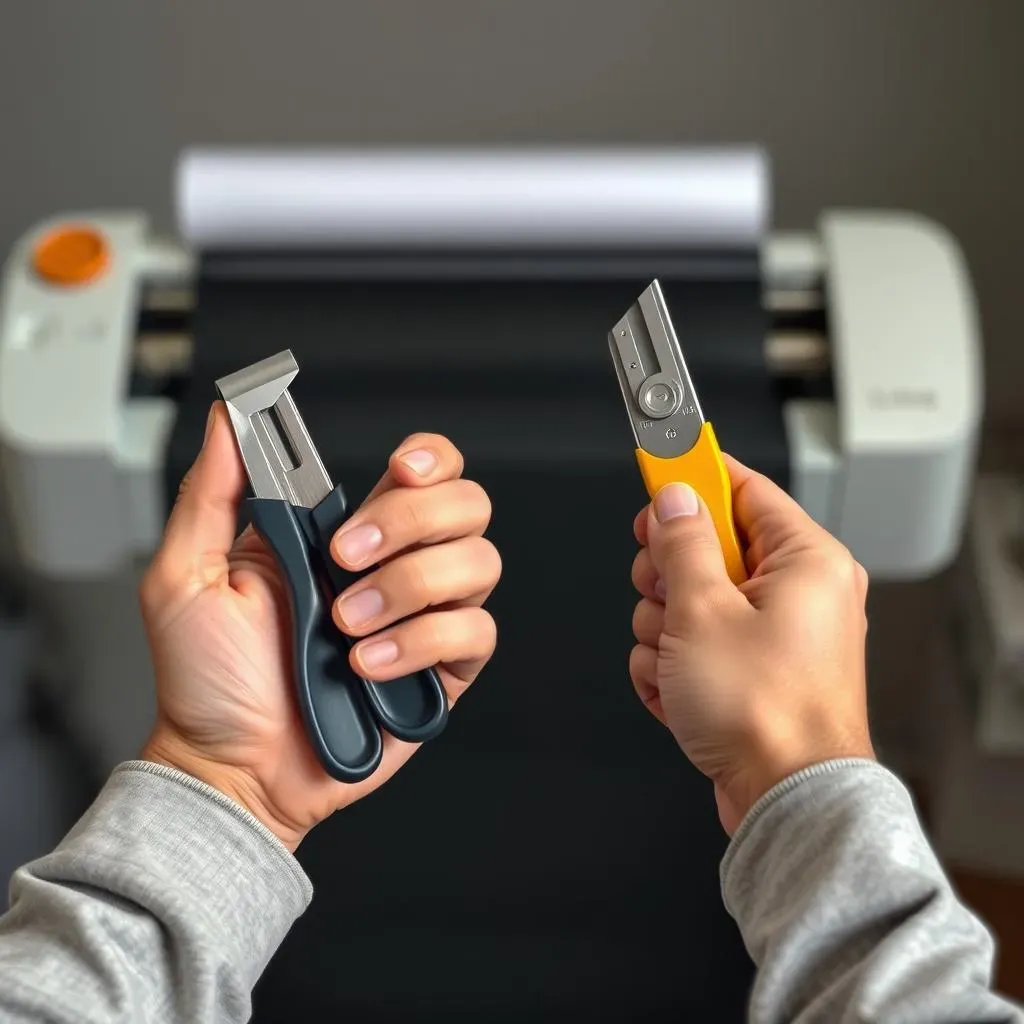Table of Contents
So, you're wondering, "Will a paper cutter cut vinyl?" It's a question many crafters and DIY enthusiasts face. This article tackles that very question head-on, providing a clear and comprehensive guide to help you decide whether a paper cutter is the right tool for your vinyl projects. We'll explore the capabilities of a paper cutter, comparing its performance against specialized vinyl cutters. We'll delve into the specifics of different vinyl types and their thicknesses, examining how these factors influence the success of using a paper cutter. You'll learn about the potential advantages and disadvantages, including the impact on the quality of your cuts and the overall efficiency of your workflow. By the end of this article, you'll have a much clearer understanding of whether a paper cutter is suitable for your needs, or if a more specialized tool is the better investment. Let's get started and discover the truth behind "will a paper cutter cut vinyl?"
Can a Paper Cutter Cut Vinyl? Exploring the Possibilities
Can a Paper Cutter Cut Vinyl? Exploring the Possibilities
Thin Vinyl: A Paper Cutter's Playground?
Let's be honest, the idea of using a paper cutter on vinyl sounds a little… unconventional. But hear me out! For those super-thin, almost paper-like vinyls, a paper cutter might actually work surprisingly well. Think of those temporary adhesive vinyls used for crafting or short-term signage. Their flexibility and thinness mean they're less likely to jam or get damaged by the cutter's blade. You'll get a clean, straight cut, ideal for precise projects. It's a cost-effective method, especially if you're only working with small quantities of this type of vinyl.
However, there's a catch. Even with thin vinyl, you need to be gentle! Too much pressure, and you risk tearing or creasing the material. The blade needs to be sharp; a dull blade will result in ragged edges and frustration. Think of it like cutting delicate paper – precision and a light touch are key. You might find yourself making multiple passes for thicker areas.
Vinyl Type | Paper Cutter Suitability | Notes |
|---|---|---|
Thin Adhesive Vinyl | Good | Use a sharp blade and light pressure. |
Thick, Rigid Vinyl | Poor | Likely to jam or damage the cutter. |
Heat Transfer Vinyl | Questionable | Depends on thickness; test a small piece first. |
Thick Vinyl: A Paper Cutter's Nemesis?
Now, let's talk about the heavier hitters – the thick, rigid vinyls that are used for things like car decals or long-lasting signs. These are a completely different ball game. Trying to force thick vinyl through a paper cutter is like trying to squeeze a watermelon through a straw. It's not going to end well. The vinyl will likely jam the mechanism, possibly damaging the cutter beyond repair. You'll also probably end up with a very uneven, possibly mangled cut. The material's stiffness makes it resistant to the cutting action, leading to frustration and a potentially ruined project.
It's crucial to remember that paper cutters are designed for paper, not for the tougher, more resilient material of vinyl. Using the wrong tool for the job always leads to bad results. For thick vinyl, investing in a specialized vinyl cutter or using a rotary cutter with a self-healing mat is a much safer and more efficient approach. Your time and sanity are worth it!
- Always check the vinyl thickness before attempting to cut it with a paper cutter.
- If unsure, test a small piece first.
- Consider the long-term cost: repairing a damaged paper cutter may exceed the cost of a specialized tool.
Paper Cutters vs. Vinyl: A Detailed Comparison for Cutting Vinyl
Paper Cutters vs. Vinyl: A Detailed Comparison for Cutting Vinyl
Blade Technology: A Tale of Two Cutters
Let's dive into the heart of the matter: the blades. Paper cutters typically use a guillotine-style blade, a single, heavy blade that slices through the paper with a swift, powerful chop. This is great for paper's relatively soft and uniform consistency. Vinyl, however, presents a different challenge. Its varying thicknesses and potential for stretching or tearing demand a more versatile approach. While a sharp paper cutter blade *might* manage thin vinyl, the force required could easily damage the material, resulting in uneven cuts or even a ruined piece of vinyl. Specialized vinyl cutters, on the other hand, often employ rotating blades, allowing for more precise control and a smoother cut on the material's surface. They're also designed to handle the varied textures and thicknesses of vinyl.
Think of it like this: using a paper cutter on thick vinyl is like using a butter knife to cut a steak – it's possible, but it's going to be a messy and inefficient process. A specialized vinyl cutter is more like using a sharp steak knife – designed for the job, resulting in a clean, precise cut. The difference in blade technology directly impacts the quality of your final product.
Feature | Paper Cutter | Vinyl Cutter |
|---|---|---|
Blade Type | Guillotine | Rotating |
Cutting Force | High, single action | Adjustable, controlled pressure |
Suitability for Vinyl | Limited (thin vinyl only) | Excellent (all vinyl types) |
Material Handling: Precision vs. Power
Beyond the blade itself, the way each cutter handles the material is crucial. Paper cutters are built for speed and efficiency when dealing with stacks of paper. They often have a clamping mechanism to hold the paper firmly in place while the blade cuts. This works fine for paper, which is relatively stiff and doesn't deform easily. Vinyl, however, can be more flexible and prone to warping or stretching under pressure. A paper cutter's clamping mechanism, while ensuring a straight cut for paper, might actually distort or damage thinner vinyl during the cutting process.
Specialized vinyl cutters often incorporate features designed to minimize material distortion. They may have self-healing cutting mats that provide a stable cutting surface and prevent the vinyl from slipping or moving during cutting. Some even have sophisticated feed systems that ensure the vinyl moves smoothly and consistently through the cutting process, preventing uneven cuts or jamming. The difference in material handling capabilities underscores the importance of choosing the right tool for the job, especially when dealing with delicate or intricate designs. Remember, precision is key when working with vinyl.
- Consider the size and weight of your vinyl projects.
- Think about the complexity of your designs.
- Evaluate the importance of precise, clean cuts.
Choosing the Right Tool: Paper Cutter or Specialized Vinyl Cutter?
Choosing the Right Tool: Paper Cutter or Specialized Vinyl Cutter?
Weighing the Pros and Cons
So, after exploring the capabilities of a paper cutter with vinyl, the big question remains: should you use one, or invest in a dedicated vinyl cutter? It really boils down to your project needs and budget. For small, simple projects involving thin vinyl, a paper cutter can be a perfectly adequate – and inexpensive – solution. You already own it, so it doesn't represent an additional cost. However, for larger projects, more complex designs, or thicker, more durable vinyls, a specialized vinyl cutter is the way to go. It offers superior precision, better material handling, and ultimately, a higher-quality finished product. The initial investment might seem steep, but the long-term benefits in terms of time saved, material waste avoided, and the quality of your work often outweigh the upfront cost.
Think of it like choosing between a hammer and a precision screwdriver. A hammer is great for rough work, but it's not ideal for delicate tasks. Similarly, a paper cutter is fine for certain vinyl projects, but a specialized vinyl cutter offers the precision and control needed for many jobs. The choice depends entirely on the specific task at hand. It’s about finding the right tool for the job, not just the easiest or cheapest option.
- Project size and complexity
- Vinyl type and thickness
- Budget and long-term cost considerations
- Desired level of precision and quality
Beyond the Blade: Software and Design
Let's not forget the software aspect. Dedicated vinyl cutters often come with software that allows you to create and import complex designs, ensuring precise cutting. This software usually handles all the intricate details, making the cutting process much easier. While you can certainly create simple designs for a paper cutter, the complexity of the designs you can create and cut is significantly limited. For intricate designs, the software capabilities of a dedicated vinyl cutter are essential for achieving a professional outcome. The precision and repeatability offered by specialized vinyl cutters and their accompanying software are unmatched by a simple paper cutter. If you’re planning on doing a lot of vinyl work, the software included with a vinyl cutter is a huge advantage.
Ultimately, the choice between a paper cutter and a specialized vinyl cutter comes down to your individual needs and priorities. Consider the frequency of your projects, the complexity of your designs, and the type of vinyl you'll be working with. A paper cutter may suffice for occasional, simple projects with thin vinyl, but for more demanding work, a dedicated vinyl cutter will deliver superior results and a more efficient workflow. It's an investment in quality and precision.
Feature | Paper Cutter | Vinyl Cutter |
|---|---|---|
Software Integration | None or very basic | Advanced design and cutting software often included |
Design Complexity | Simple designs only | Handles complex, intricate designs with ease |
Precision and Accuracy | Limited, especially with thicker vinyl | High precision and accuracy consistently delivered |